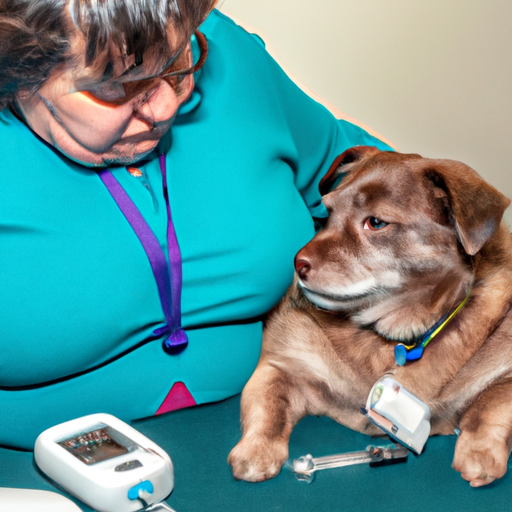Diabetes in dogs is a common health condition. It can be daunting to find out your furry friend has diabetes, but don’t fret; with the right knowledge and care, your dog can lead a healthy and happy life. This article will guide you through every aspect of dog diabetes treatment.
Understanding Dog Diabetes
Just like in humans, diabetes in dogs affects their insulin production, resulting in high blood sugar levels. There are two types:
- Type I Diabetes: This is the most common form. Dogs with this type do not produce enough insulin.
- Type II Diabetes: Dogs with this type are unable to use insulin effectively.
Recognizing the Symptoms
Be vigilant to any changes in your dog’s behavior or physical condition. Some symptoms to look out for:
- Excessive thirst
- Increased urination
- Weight loss despite normal or increased food consumption
- Cloudy eyes
- Chronic or recurring infections
Diagnosis and Monitoring
If you notice any of the above symptoms, consult your vet immediately. They will conduct a series of tests, including:
- Blood tests
- Urine tests
Once diagnosed, regular monitoring of your dog’s blood sugar levels is crucial. This can be done through:
- Regular vet check-ups
- Home monitoring devices
Treatment Options
Your vet may suggest different treatment options based on your dog’s condition:
- Insulin Therapy: This is the most common treatment where insulin injections are administered to your dog generally twice a day.
- Oral Medications: Some dogs may respond well to oral medications that help their body’s insulin work better.
- Diet and Exercise: A balanced diet and regular exercise can help control your dog’s blood sugar levels.
| Treatment | Pros | Cons |
|---|---|---|
| Insulin Therapy | Effective in lowering blood sugar | Requires regular injections |
| Oral Medications | Easier to administer | Some dogs may not respond |
| Diet and Exercise | Non-invasive | Requires strict adherence |
Managing Your Dog’s Diet
A balanced diet is key in managing your dog’s diabetes. Some tips include:
- Feed your dog the same amount and type of food at the same time each day.
- Avoid foods high in sugar.
- Opt for high-fiber foods which can help slow the entrance of glucose into the bloodstream.
Importance of Regular Exercise
Exercise plays a vital role in managing your dog’s diabetes. It helps:
- Keep your dog’s weight in check.
- Improve your dog’s insulin sensitivity.
Remember, the goal is to keep your dog’s exercise routine as consistent as possible to prevent fluctuations in blood sugar levels.
Coping as a Caregiver
It can be challenging to manage your dog’s diabetes. Here are some strategies to help you cope:
- Educate Yourself: The more you know about diabetes, the better equipped you will be to manage it.
- Seek Support: Connect with other caregivers who are dealing with the same issue. They can provide emotional support and practical advice.
- Take Care of Yourself: It’s important to look after your own well-being too. Remember, a healthy and happy caregiver means a healthier and happier dog.
Frequently Asked Questions (FAQs)
-
Can my dog live a normal life with diabetes?
Yes, with proper management, your dog can lead a normal, active life. -
How often should I take my dog for check-ups?
Regular check-ups are crucial. Your vet can advise you based on your dog’s condition. -
Can diabetes in dogs be prevented?
While there’s no surefire way to prevent diabetes, maintaining a healthy weight and balanced diet can lower your dog’s risk. -
What should I do if my dog’s blood sugar levels fluctuate?
Consult your vet immediately. They may need to adjust your dog’s treatment plan.
Remember, diabetes is not a death sentence for your dog. With your love and care, and the right treatment plan, your furry friend can live a fulfilling life.



